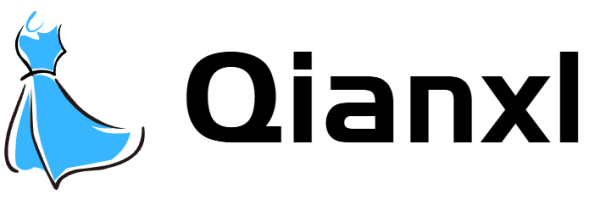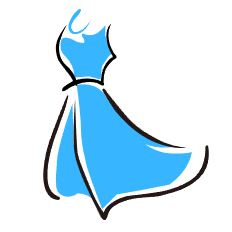Once a humble utility item meant to hold up trousers or snug a dress, the belt has reclaimed its space on the fashion stage. No longer confined to functionality, belts are now the punctuation mark on an outfit—the detail that ties everything together or deliberately disrupts expectations. From sleek minimalist straps to oversized, embellished corset belts, this accessory has evolved into a tool of personal expression and stylistic experimentation. In an era that values both individualism and reinvention, belt trends are not just cinching waists—they’re reshaping silhouettes, defining eras, and challenging norms.
This essay explores the resurgence and reinvention of belts, examining how their role in fashion has shifted, what current trends are dominating wardrobes, and why this once-overlooked item is now center stage.
A Historical Thread: Belts Through the Ages
Before diving into modern belt trends, it’s worth acknowledging their long and layered history. Belts have been used for thousands of years, dating back to Bronze Age civilizations where they were crafted from leather or cloth and served practical purposes—often to carry tools or weaponry. In Ancient Greece and Rome, belts added elegance to tunics and robes, sometimes signifying rank or wealth.
In the Middle Ages, belts were key in both men’s and women’s attire, often heavily decorated with metalwork, embroidery, and religious symbols. Fast forward to the 20th century, and belts became synonymous with changing silhouettes: think of the hourglass cinch of the 1950s, the free-flowing, low-slung belts of the 1970s bohemian era, or the exaggerated waistlines of 1980s power dressing.
Belts have always evolved alongside culture, and today’s trends continue that legacy—but with fresh, forward-thinking intention.
Trend 1: The Return of the Waist
In a fashion landscape dominated by oversized silhouettes and baggy fits, belts have reemerged as a way to define and highlight the waist. The cinched-waist look is no longer limited to vintage aesthetics or formalwear; it’s now seamlessly integrated into everyday outfits—from trench coats to oversized blazers, even hoodies.
Wide belts, especially leather or corset-style, are making a huge comeback. These aren’t just accessories; they are structural elements that shape the garment itself. Worn over blouses, dresses, or even puffer jackets, they create dramatic proportions, emphasizing an hourglass figure or adding edge to otherwise soft silhouettes.
The popularity of these belts speaks to a broader trend: the desire to balance comfort with structure. In a world where many still live in loungewear, adding a statement belt can turn an everyday outfit into a look—without sacrificing comfort.
Trend 2: Minimalist Chic
On the opposite end of the spectrum lies the minimalist belt trend: thin, understated straps in neutral tones—beige, black, taupe—often with barely-there buckles or delicate metal accents. These belts don’t scream for attention; they whisper refinement.
Brands like The Row, COS, and Totême champion this aesthetic, proving that less can indeed be more. A slender belt around high-waisted trousers or cinching a monochromatic dress creates subtle definition and polish, perfect for those who favor quiet luxury or clean silhouettes.
Minimalist belts also tap into the modern fashion emphasis on versatility. One well-made leather belt can be styled across dozens of outfits, serving as a foundational accessory for a streamlined wardrobe.
Trend 3: Chains, Ropes, and Non-Traditional Materials
Belt trends are no longer limited to leather. Designers and fashion-forward consumers alike are experimenting with unconventional materials—gold chains, braided ropes, pearl strands, even woven raffia. These options offer a more eclectic, artistic feel, often functioning more like jewelry than a traditional belt.
Chain belts in particular, a callback to the early 2000s and the glam of Y2K fashion, are making a notable comeback. When worn over simple outfits—like slip dresses, fitted knits, or even beachwear—they instantly elevate the look with a hint of edge and elegance.
These non-traditional belts blur the line between accessory and statement piece. They often don’t serve a functional purpose at all, and that’s precisely the point: they’re decorative, expressive, and playful.
Trend 4: Logo Belts and the Quiet Loud
After a period of backlash against overt branding, logo belts are experiencing a nuanced revival. Think of the iconic Gucci GG buckle or the LV monogram belt—not necessarily worn for the logo itself, but for the attitude it conveys. The new wave of logo belts isn’t about excess; it’s about confidence and identity.
What’s interesting is how these belts are styled now. Instead of being the flashy centerpiece, they’re often paired with otherwise understated outfits—like neutral-toned tailoring or minimalist streetwear—creating a balance between quiet and loud, heritage and modernity.
Logo belts today are less about showing off and more about signaling taste, nostalgia, or brand loyalty with a wink, not a shout.
Trend 5: The Utility Movement
Practicality has a new look. Inspired by workwear and military gear, utility belts with functional elements—pouches, clips, hooks—have crept from tactical roots into the fashion mainstream. Brands like Off-White, A-COLD-WALL*, and even Dior Men have embraced the aesthetic, offering belts that double as storage solutions or wearable tech.
These belts speak to the growing popularity of “gorpcore” and utilitarian style, where form meets function in bold, often industrial ways. They’re especially popular among Gen Z and fashion-forward millennials who appreciate pieces that do more than just look good.
In an age of smartphones, AirPods, and pocketless clothing, a belt that holds essentials isn’t just stylish—it’s genuinely useful.
Belts and Identity: More Than an Accessory
What unites all these trends is one simple truth: belts are now a canvas for self-expression. Whether you’re leaning into nostalgia, utility, elegance, or rebellion, your choice of belt can say something about who you are and how you see yourself. And unlike clothing, which often requires fit and tailoring, belts are accessible. One good belt can refresh a whole wardrobe. One bold buckle can anchor a look.
They’re also gender-fluid. The boundaries between “men’s” and “women’s” belts have increasingly blurred. Whether it’s a woman styling a rugged tactical belt or a man sporting a pearl chain belt, fashion is becoming more about personal style than gendered rules.
Styling Tips: How to Make the Most of Belt Trends
If you’re inspired to explore the world of belts beyond the basics, here are a few tips:
Layer with intention: Try a wide belt over a blazer or long cardigan to instantly elevate the silhouette.
Use contrast: A bold belt on a neutral outfit can add just the right amount of drama.
Mix materials: Pair leather with metal, or fabric belts with structured pieces for unexpected texture.
Play with placement: Belts don’t always have to sit at the natural waist. Try them higher for an empire effect or lower for a relaxed, boho vibe.
Don’t overthink it: Sometimes, the best accessory is the one you didn’t plan to wear but threw on at the last moment. Belts can work that way.
Final Thoughts: A Cinch with Substance
In fashion, as in life, it’s often the smallest details that make the biggest impact. Belts may seem like minor players in a wardrobe, but their resurgence reveals just how powerful they can be in shaping not just our silhouettes, but our sense of identity. From ultra-minimal to gloriously ornate, from classic leather to avant-garde materials, belts are no longer just about keeping your pants up—they’re about elevating your entire presence.















Discussion about this post